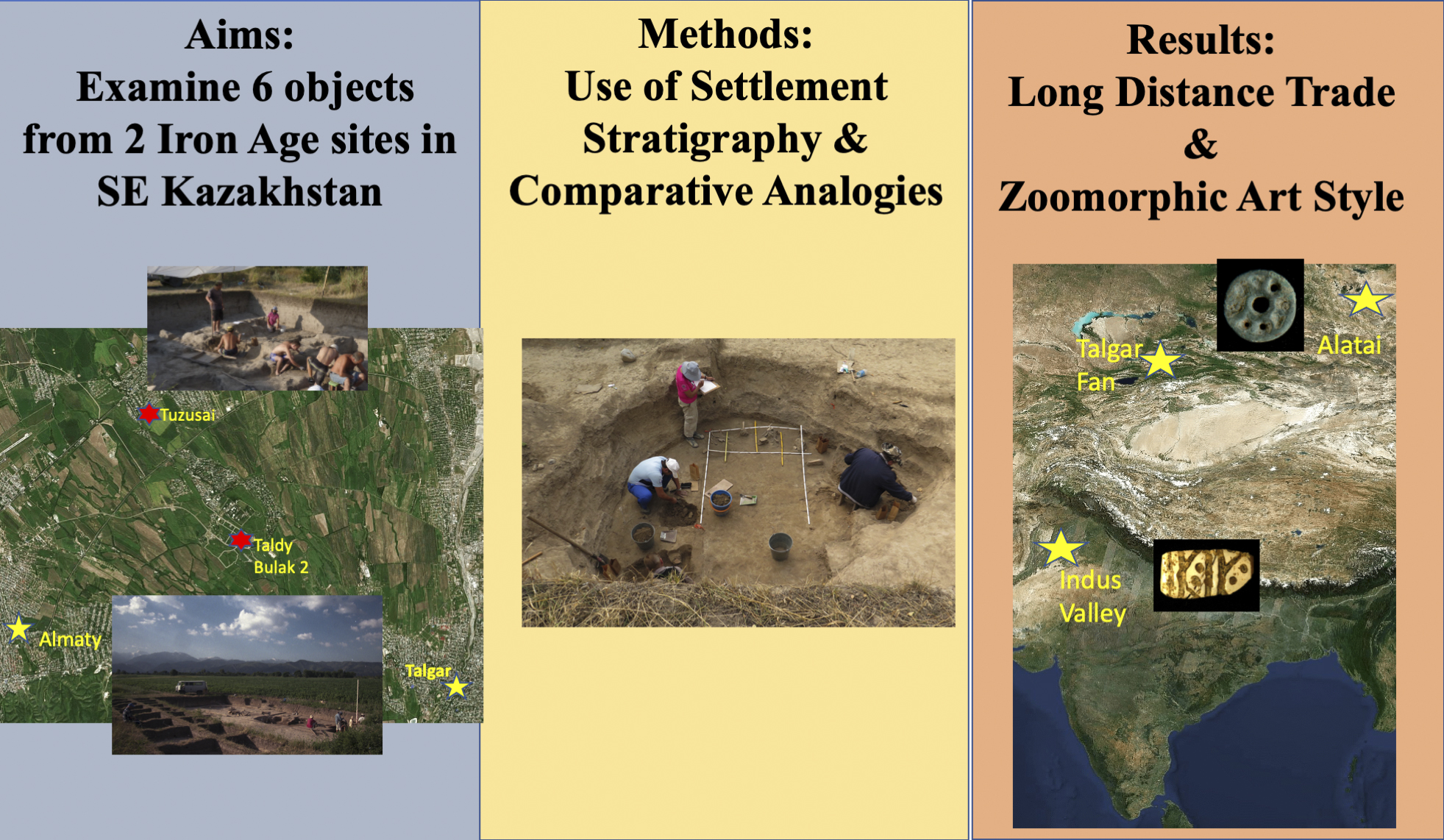Two Iron Age settlements, Tuzusai and Taldy Bulak 2 (ca. 500 BCE to 1 CE), located in Southeastern Kazakhstan on the Talgar alluvial fan north of the Tian Shan range, have yielded a small collection of bone, antler/horn, bronze, and stone artifacts with affinity to nomadic art of the first millennium BCE. Both settlements date within the period of late Saka culture. Two pieces have decorative ornamentations with zoomorphic imagery: a small carved fragment of a with carved images of a wing and an ear and a perforated bone disk with the carving of three birds’ heads. The other artifacts include objects associated with Saka weaponry or nomadic economy such as the two antler/horn psalia (cheek pieces) and a bronze amulet. A carnelian bead will also be described as an imported object. These special finds are found on the occupation floors of mud brick houses and pit houses of settlements, not in grave or burial contexts. The objects are placed in stratigraphic sequence in the settlement sites. Then the method for placing these objects within the chronological framework of “animal-style art” is through comparisons with similar objects found throughout Eurasia—a method used in Soviet and Post-Soviet archaeology. The results show that functional and stylistic elements of the six objects indicate that the Talgar settlements were part of a larger world-system of trade and communication along the early Silk Route(s).

